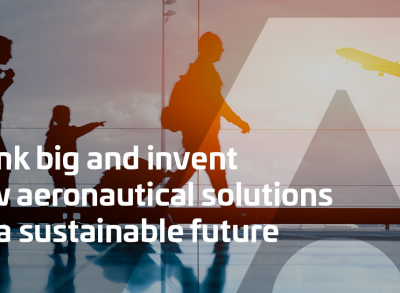The aviation industry is driving digital transformation
Whether in terms of civil or military aviation or the space industry, the words on everyone's lips are connectivity, Big Data management and the issue of cybersecurity.

The world of aviation and space is on the front line of this revolution. It must adapt to the increasingly high standards set by its customers throughout the value chain, and manage the arrival of new players who can offer breakthrough solutions based on new forms of digital technology. There are many strategic challenges to face. But all the players in air transport, business aviation, and civil and military aeronautics are also beneficiaries of this transformation.
The growing value of Big Data, a growth lever for air transport players
Using new information technology, this sector, in complementing its core business, is now committed to using a new business model that develops and monetises the Big Data in its possession. Information about how long passengers stay in each country, how much they spend on reservations, their nationalities and destinations, hotel stays or car rentals booked online, in addition to flight bookings, and so on. All these elements are sources of data that can be sold to many different companies and administrative bodies who are looking to adapt their business accordingly. Confronted by an economy of sharing and collaboration gaining growing market share, with the appearance of players such as AirBnB and Uber, traditional tourism players (hotels, car rental companies, etc.) are keen to acquire information that will help them to remain competitive. A real possibility for growth is now available and it is developing exponentially.
In parallel, the requirement for in-flight entertainment, the need to offer passengers constant and more personalised options, as well as full access to telephones, internet and the ability to continue carrying out their personal or business affairs during flights, poses huge technical challenges.
Staying connected, the cornerstone of innovation
Other needs to be managed are the requirement for uninterrupted high-speed internet connections, whatever the weather or position of the aircraft, as well as the quality of service available in the cabin. These innovations are only the tip of the iceberg and are the digital upheavals that are most easily understood by the general public.
Connectivity to operate - and interoperate - their aircraft increasingly quickly, in improved conditions of safety and precision.
In addition to closer and more carefully-managed customer-business relationships, airlines, as well as all the players in the civil and military segment of aviation and space, are developing digital technologies more and more quickly, which uses connectivity and allows them to operate - and interoperate - their aircraft increasingly quickly, in improved conditions of safety and precision.
Security, a central challenge
This connectivity requires the installation of secure, non-hackable lines of communication between aircraft, as well as between aircraft and ground and satellite controls. In this sense, the question of cybersecurity is crucial, as much in the civil as in the military context. Whether it is about preventing the hacking of a drone or civil aircraft by a terrorist group or enemy power, the issue is the same.
The challenge also involves civil and armed forces pilots, who are confronted with increasingly complex aircraft systems and must satisfy increasingly exacting security standards, through the provision of decision-making tools. Air Traffic Management systems help to adapt flight paths to changes in the weather or unexpected traffic disruptions.The Electronic Flight bag and its constant evolutions are just one example of these various forms of technology and challenges. As it happens, civil and military needs are becoming more and more similar. Combat pilots work, just like their civilian colleagues, in a system of aeronautical, satellite and ground systems that help coordinate the missions of each.
But this complementarity increasingly works in both directions. While R&D and R&T for defence industries, and in particular for military aviation and the space segment, have benefited civil aviation through transfers and technological improvements, elements from the civil aviation segment are now often finding applications in the military field.
Find us on Twitter @ThalesAerospace, on our official Youtube channel Onboard TV and on LinkedIn Thales Aerospace.




